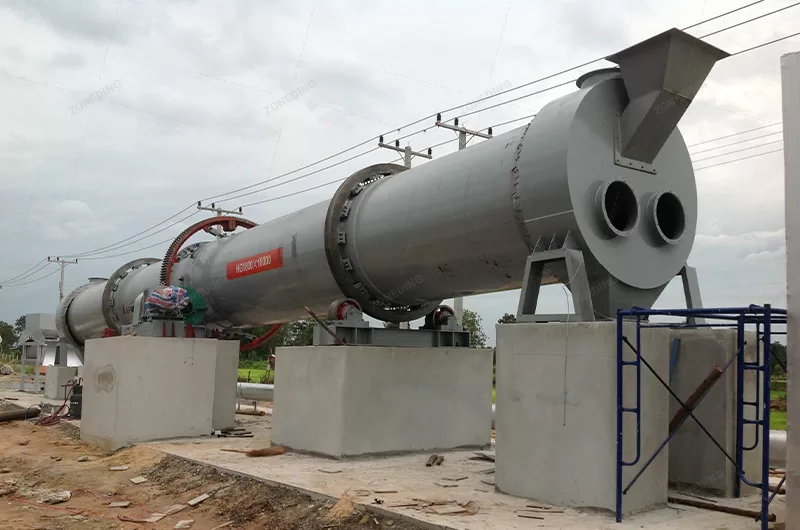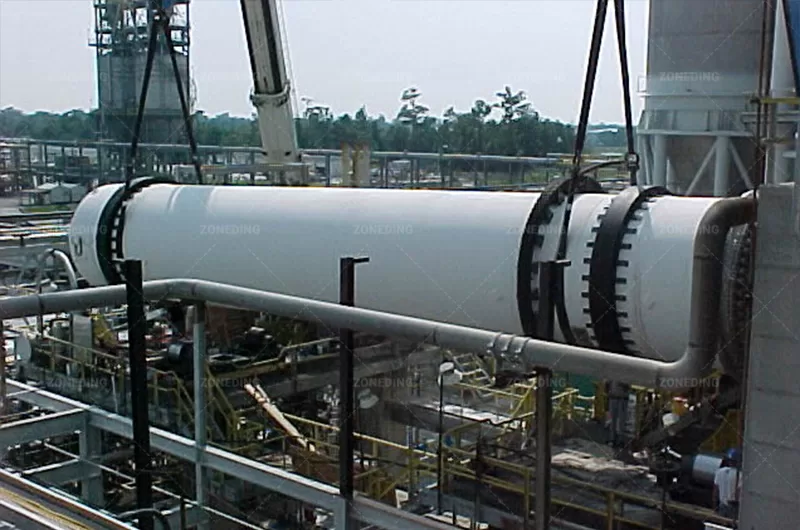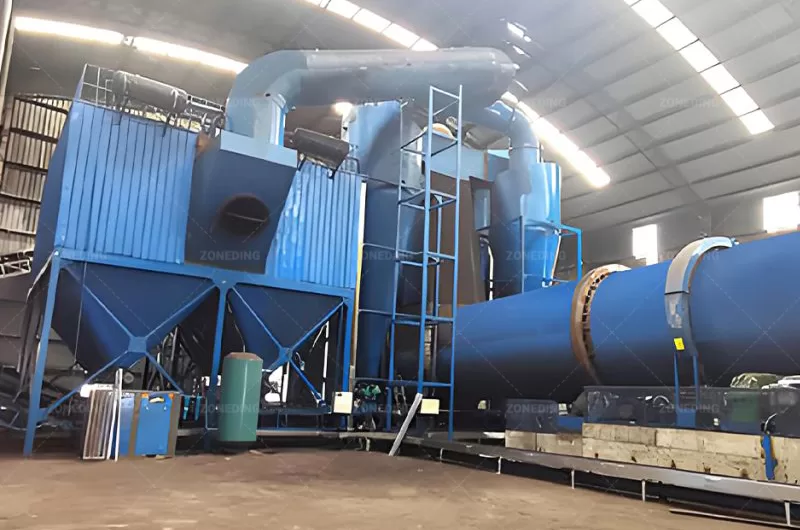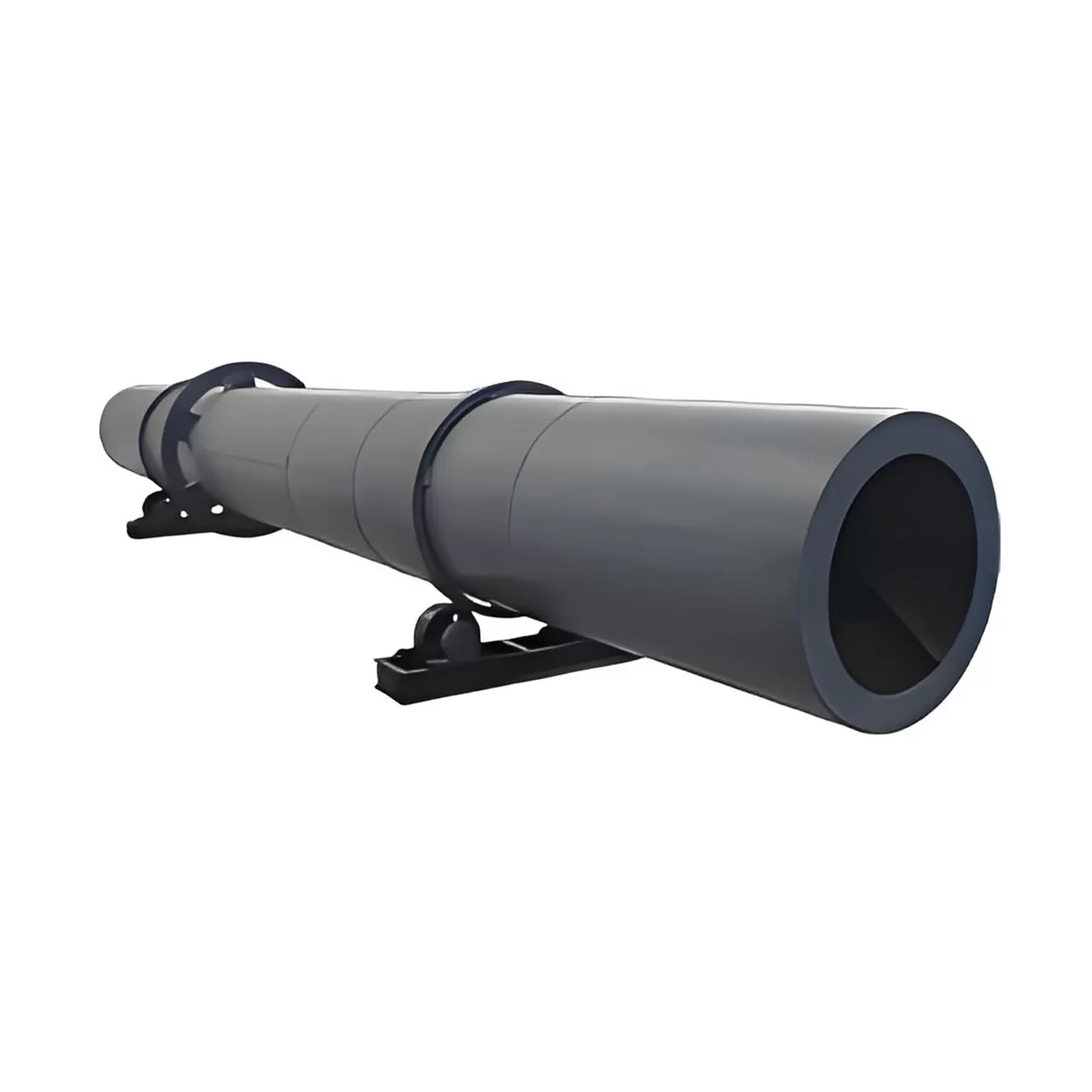全站搜索
Search the entire website
Search the entire website
The sugarcane bagasse dryer adopts high-temperature and rapid drying process. With a large heat transfer coefficient and high thermal efficiency, it can quickly dry sugarcane bagasse to a moisture content of about 12%. The bagasse dryer is specially designed for drying materials with a certain degree of viscosity, and a special scraping device is used inside the drying cylinder to avoid the material sticking to the wall.
A bagasse dryer is a piece of industrial equipment specifically designed to turn Bagasse trash into treasurereduce.
Wet bagasse has low value and is hard to handle. Simply burning it is inefficient and wasteful. Drying unlocks its fuel potential and saves energy costs significantly.
Electing a dryer specifically designed for bagasse is crucial. It addresses handling challenges like fiber tangling, boosts its heating value by removing moisture, and incorporates energy-saving and safety features, transforming waste into valuable fuel.
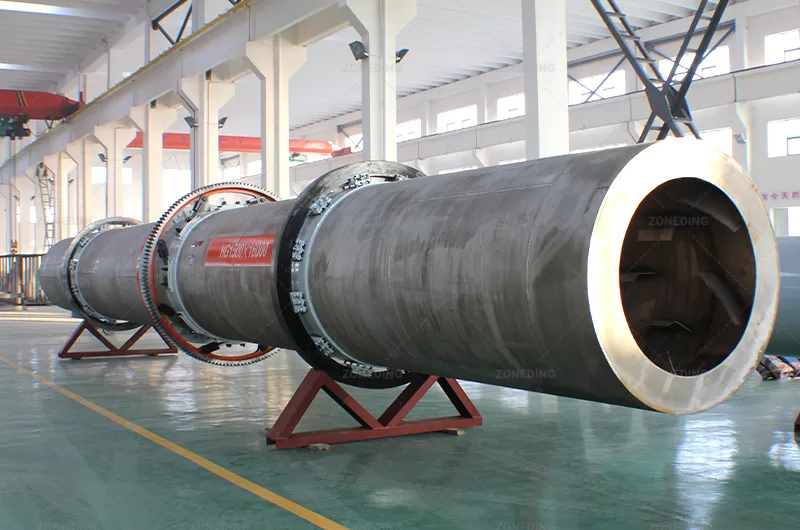
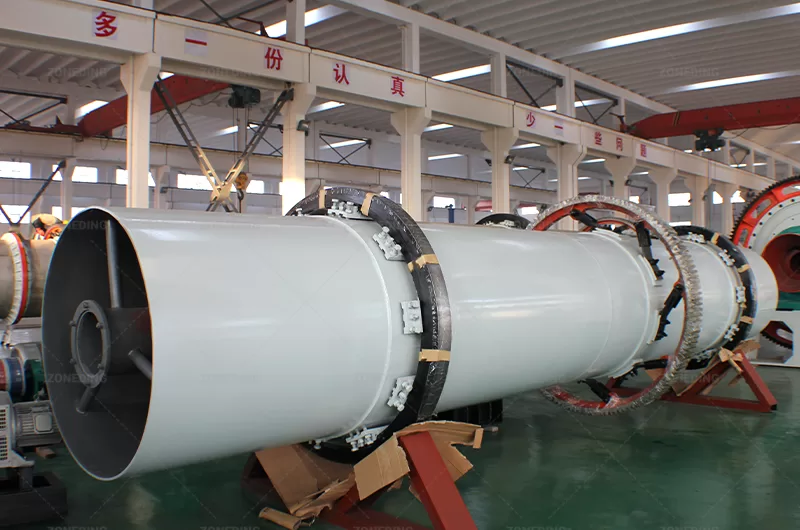
Transforming sugarcane waste into a valuable resource requires careful processing. Drying is a key step, but it’s not as simple as just applying heat. Understanding the unique challenges of bagasse is essential for choosing the right equipment and achieving efficient, safe operation.
Piles of wet bagasse take up space and have limited use. Its low heat value makes it a poor fuel directly. Drying increases its value for energy production and potentially other applications.
While boosting its fuel value for boilers is the main reason, drying also reduces transport weight and cost, improves storage stability (less decomposition), and can prepare bagasse for other uses like panel board or pulp production.

The primary motivation for drying bagasse is definitely to improve its performance as a fuel, typically for cogeneration plants in sugar mills. Wet bagasse, often containing 45-55% moisture, has a low net calorific value because much energy is wasted evaporating the water during combustion. Drying it down to 10-15% moisture significantly increases the energy released per unit weight, improving boiler efficiency and steam production. Beyond combustion, drying offers other key advantages:
| Feature | Wet Bagasse (approx. 50% Moisture) | Dry Bagasse (approx. 10-15% Moisture) | Impact |
|---|---|---|---|
| Net Calorific Value | Low (~7.5 MJ/kg) | High (~15-17 MJ/kg) | Significantly more usable energy per ton. |
| Boiler Efficiency | Lower | Higher | More steam/power generation for same fuel amount. |
| Transport Weight | High | Lower | Reduced shipping costs. |
| Storage Stability | Poor (decomposition risk) | Good | Less material loss, safer storage. |
| Handling | Can be sticky, prone to clumping | Flows better (though still fibrous) | Easier automated handling. |
Bagasse seems like simple plant fiber, easy to handle. But its long fibers tangle, it holds lots of water, and dry dust is very flammable. These create real drying challenges.
Difficulties include its tendency for long fibers to wrap and clog feeding systems and internal dryer parts. High, variable moisture complicates consistent drying. Also, dry bagasse dust poses a significant fire and explosion risk.
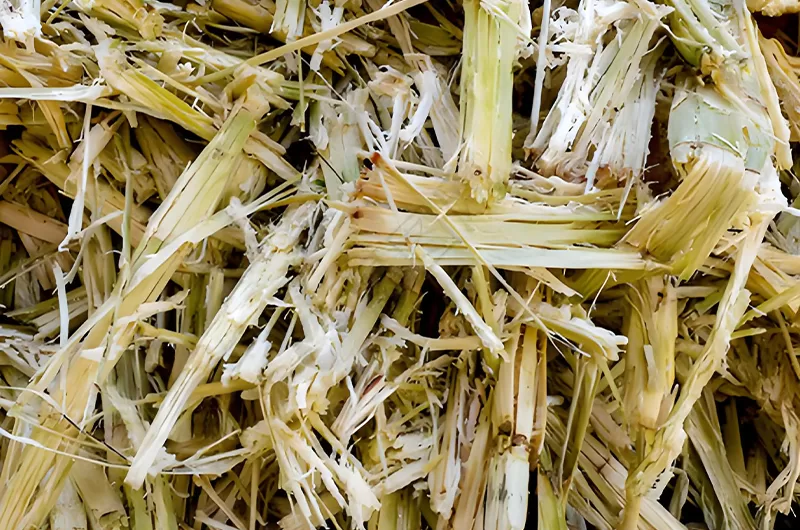

Drying bagasse presents unique challenges compared to materials like minerals or grains. Based on experience:
| Challenge | Description | Consequence if Not Addressed |
|---|---|---|
| Fiber Tangling/Clogging | Long fibers wrap around shafts, bridge in hoppers, tangle on lifters. | Inconsistent feed, blockages, poor drying, downtime. |
| High/Variable Moisture | Feed moisture is high (45-55%+) and can fluctuate significantly. | Inconsistent final moisture, energy waste, inefficiency. |
| Fire/Explosion Hazard | Dry bagasse dust is highly flammable and explosive. | Catastrophic equipment damage, injury, production loss. |
| Low Bulk Density | Bagasse is light and bulky. | Requires larger equipment volume for the same mass flow. |
Many dryer types exist, but not all can handle bagasse well. Choosing the wrong one leads to clogs, inefficiency, or safety issues. The best choice depends on bagasse’s specific properties.
Rotary dryers are frequently the preferred choice for large-scale bagasse drying. They are robust, offer longer residence times needed for high moisture removal, and can be customized with features to handle fibrous materials effectively.
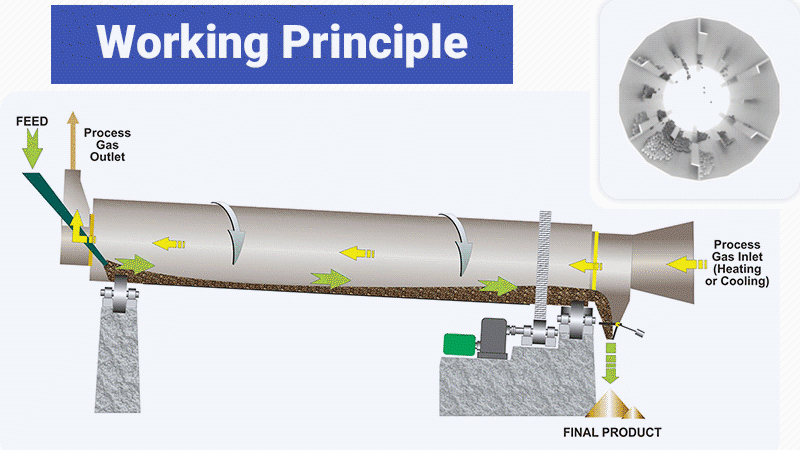
While several dryer types could theoretically be used, the rotary dryer often emerges as the most practical and robust solution for drying large volumes of bagasse, especially considering its challenging properties. Here are reasons:
For the typical needs of a sugar mill or biomass power plant requiring reliable, high-volume drying, a customized rotary dryer usually offers the best balance of performance, cost, and ability to handle bagasse’s difficult nature.
| Dryer Type | Suitability for Bagasse | Key Advantages for Bagasse | Key Disadvantages for Bagasse |
|---|---|---|---|
| Rotary Dryer | High (often preferred) | Robust, handles large volumes, adaptable. | Requires specific lifters/feeders. |
| Air/Flash Dryer | Low to Medium | Fast drying possible. | Short residence time, high clogging risk (fibers). |
| Belt Dryer | Medium | Gentle drying. | Potential matting issues, higher cost/footprint. |
Investing in a large industrial dryer requires careful specification. Focusing on the right technical details ensures you get a machine that meets your needs efficiently and reliably.
| Spec./m (Dia.×Length) | Shell Cubage (m³) | Capacity (t/h) | Installation Obliquity(%) | Highest Inlet Air Temperature(℃) | Main Motor (kw) | Weight (t) |
| Φ1.2×8.0 | 9.0 | 1.9~2.4 | 3~5 | 700~800 | 7.5 | 9 |
| Φ1.2×10 | 11.3 | 2.4~3.0 | 3~5 | 700~800 | 7.5 | 11 |
| Φ1.5×12 | 21.2 | 4.5~5.7 | 3~5 | 700~800 | 15 | 18.5 |
| Φ1.5×14 | 24.7 | 5.3~6.6 | 3~5 | 700~800 | 15 | 19.7 |
| Φ1.5×15 | 26.5 | 5.7~7.1 | 3~5 | 700~800 | 15 | 20.5 |
| Φ1.8×12 | 30.5 | 6.5~8.1 | 3~5 | 700~800 | 18.5 | 21.5 |
| Φ1.8×14 | 35.6 | 7.6~9.5 | 3~5 | 700~800 | 18.5 | 23 |
| Φ2.2×12 | 45.6 | 9.7~12.2 | 3~5 | 700~800 | 22 | 33.5 |
| Φ2.2×14 | 53.2 | 11.4~14.2 | 3~5 | 700~800 | 22 | 36 |
| Φ2.2×16 | 60.8 | 13.0~16.2 | 3~5 | 700~800 | 22 | 38 |
| Φ2.4×14 | 63.3 | 13.5~16.9 | 3~5 | 700~800 | 37 | 45 |
| Φ2.4×18 | 81.4 | 17.4~21.7 | 3~5 | 700~800 | 37 | 49 |
| Φ2.4×20 | 90.4 | 19.3~24.1 | 3~5 | 700~800 | 45 | 54 |
| Φ2.4×22 | 99.5 | 21.2~26.5 | 3~5 | 700~800 | 45 | 58 |
| Φ2.6×24 | 127.4 | 27.2~34.0 | 3~5 | 700~800 | 55 | 73 |
| Φ3.0×20 | 141.3 | 30.1~37.7 | 3~5 | 700~800 | 75 | 85 |
| Φ3.0×25 | 176.6 | 37.7~47.1 | 3~5 | 700~800 | 75 | 95 |
| Φ3.2×25 | 201 | 42.9~53.6 | 3~5 | 700~800 | 90 | 110 |
| Φ3.6×28 | 285 | 60.8~76.0 | 3~5 | 700~800 | 160 | 135 |
Providing detailed information, ZONEDING can engineer a dryer (likely a customized rotary dryer) that meets your specific throughput, product quality, and operational requirements efficiently and reliably.
Getting the moisture level just right maximizes fuel value. Too wet, and energy is wasted in the boiler. Too dry, and energy was wasted in the dryer, plus fire risk increases.
Precise control relies on an automated system using sensors for feed rate, inlet moisture, dryer temperatures, and outlet moisture. This system adjusts heat input (and sometimes drum speed) automatically to maintain the target consistently.
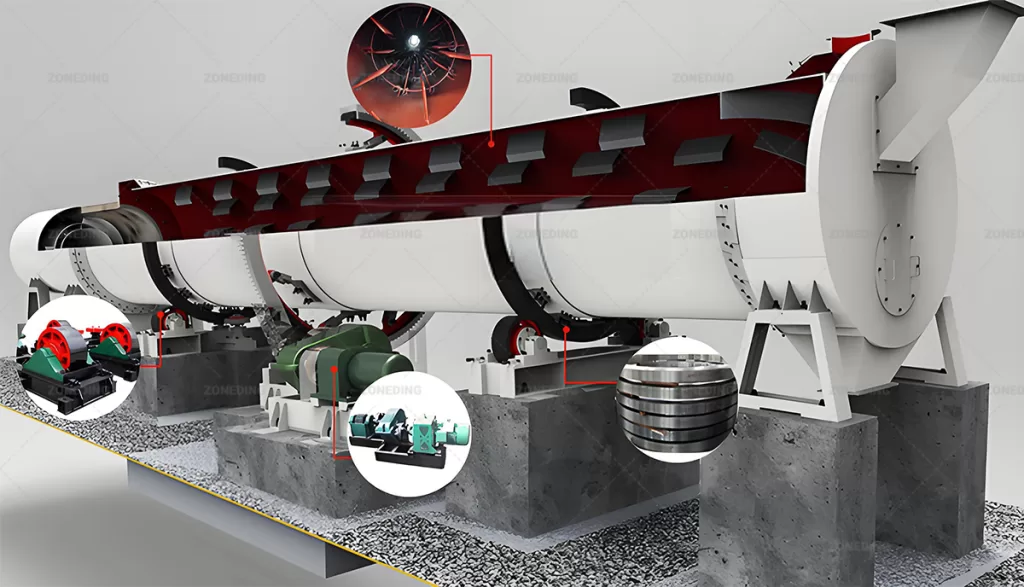
Achieving a consistent final moisture content (often targeting 10-15%) despite fluctuations in feed moisture requires more than manual adjustments. A reliable control system is essential. Simply controlling the outlet gas temperature is insufficient because it doesn’t directly measure the product moisture and reacts slowly to changes.
A robust system typically involves:
This feedback loop allows the system to react quickly and maintain consistency, maximizing fuel value and preventing over-drying.
| Control Element | Method | Purpose | Key Point |
|---|---|---|---|
| Heat Source Output | Adjust burner firing rate / furnace output. | Control overall energy input to the dryer. | Match energy to evaporation load. |
| Airflow Rate | Adjust fan speed (VFD). | Control heat delivery and moisture removal rate. | Balance efficiency and temp. |
| Material Temp Sensors | Thermocouples placed within material bed. | Provide direct feedback on product temperature. | Crucial for preventing overshoot. |
| Retention Time | Adjust drum speed / slope. | Control how long material is exposed to heat. | Ensure sufficient drying time. |
| Feed Rate Control | Stable feeding system. | Maintain consistent load on the dryer for stable temps. | Avoid fluctuations. |
Drying uses a lot of heat, meaning high fuel costs. These costs significantly impact the economics of using bagasse. Smart choices can drastically reduce energy consumption.
Key savings come from maximizing mechanical dewatering before thermal drying, optimizing the heat source (using waste heat carefully), ensuring good dryer insulation and seals, and targeting the optimal, not lowest, final moisture.
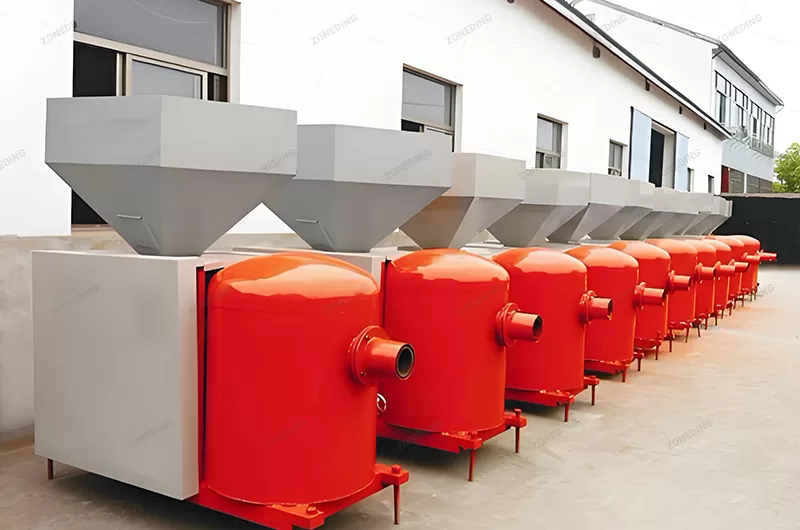
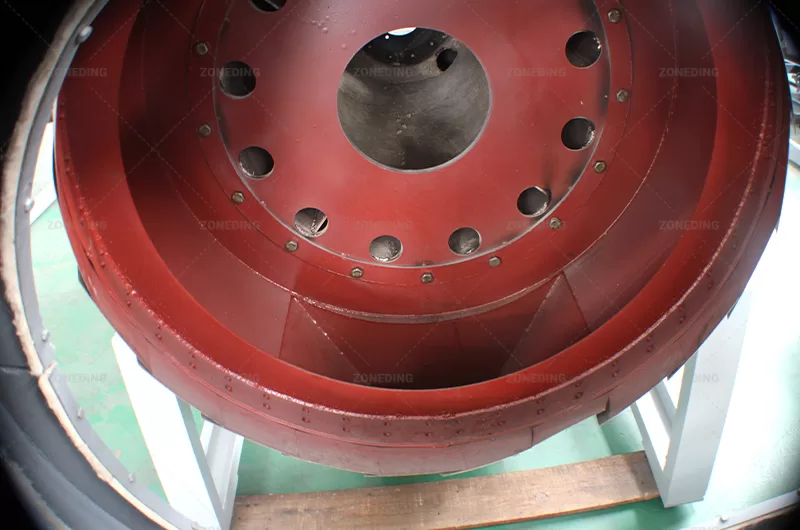

Reducing the significant energy cost of drying bagasse is crucial for project viability. Several effective strategies exist:
| Technique | Description | Impact |
|---|---|---|
| Mechanical Dewatering | Use high-pressure presses to reduce water before thermal drying. | Dramatically lowers thermal energy required for evaporation. |
| Heat Source Evaluation | Choose fuel carefully; analyze true cost/impact of waste heat. | Balances fuel cost vs. capital cost, contamination, control. |
| Insulation & Sealing | Proper insulation on shell/ducts; effective seals at ends. | Minimizes heat loss, prevents inefficient air leakage. |
| Target Moisture Setting | Aim for system optimum (e.g., 10-15%), not absolute minimum. | Avoids wasting energy on marginal boiler efficiency gains. |
| Control System | Automated controls prevent over-drying and maintain efficiency. | Ensures consistent operation at optimal energy usage. |
| Regular Maintenance | Clean internals, functional seals, efficient drive system. | Maintains design efficiency over time. |
Fibrous bagasse loves to clump and tangle, causing frustrating jams. From where the material enters to where it leaves, specific design choices are needed to keep things flowing smoothly.
Use robust, non-clogging feed systems (like specialized screw feeders or live-bottom bins) and carefully designed internal dryer lifters that promote tumbling without allowing fibers to wrap or build up. Smooth transitions and proper discharge are also key.
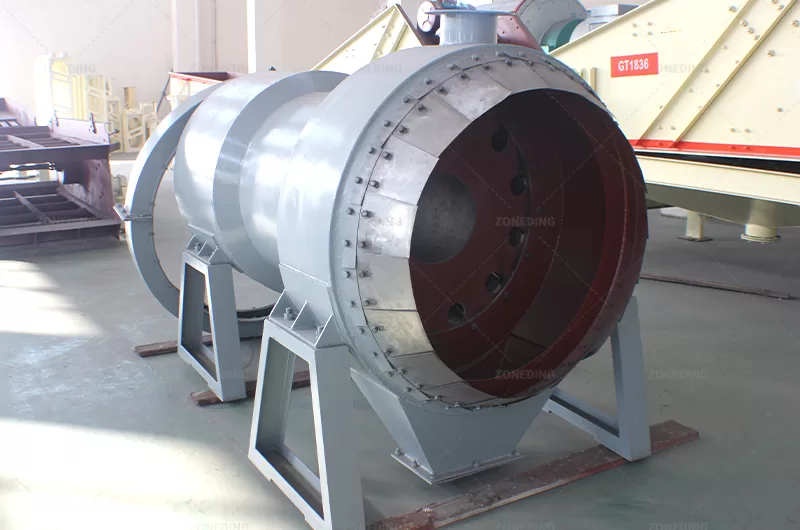
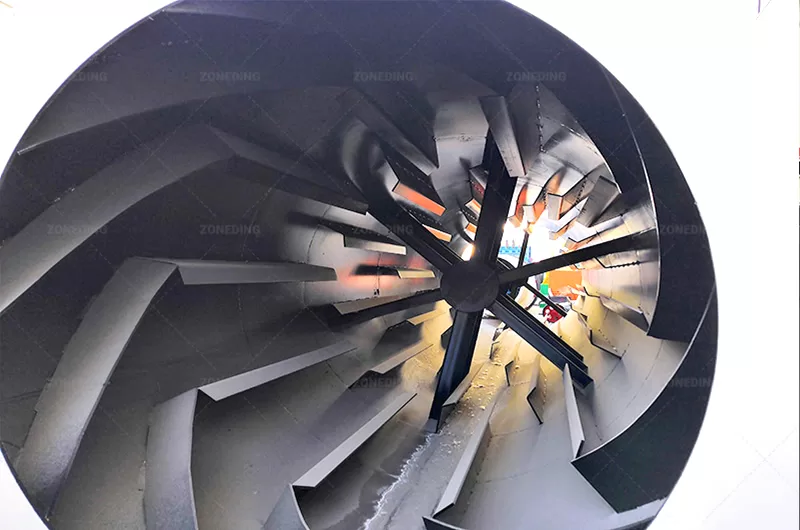
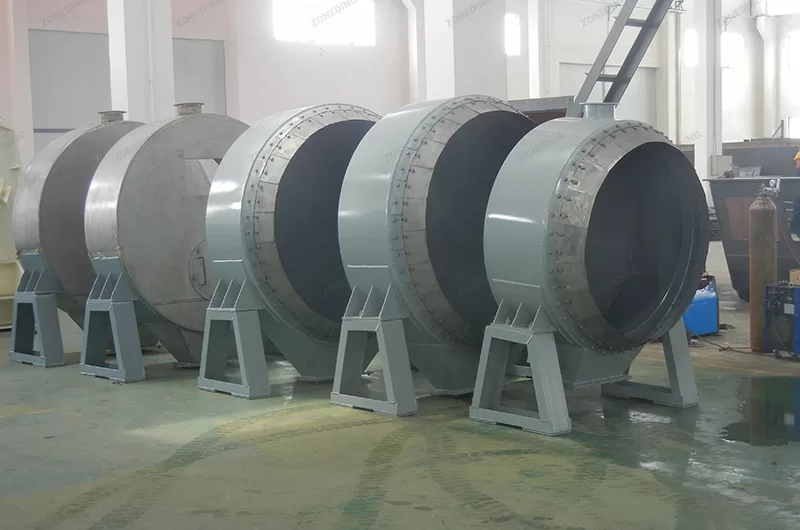
Preventing blockages caused by bagasse’s fibrous nature requires attention throughout the system design:
| System Area | Design Consideration | Purpose |
|---|---|---|
| Feed Hopper | Steep walls, live-bottom mechanism. | Prevent bridging, ensure consistent flow to feeder. |
| Feeder | Specialized screw (twin, variable pitch). | Actively move material, break clumps, resist wrapping. |
| Feed Chute | Smooth, steep, possibly vibrated. | Minimize friction and buildup points at dryer entry. |
| Dryer Lifters | Complex shapes, avoid flat catching surfaces. | Promote showering, prevent fiber accumulation/roping. |
| Discharge | Smooth transitions, adequate sizing. | Ensure easy exit of dried material without restriction. |
Dry bagasse dust is not just messy; it’s dangerously flammable and explosive. Ignoring this risk can lead to disaster.
Safety cannot be an afterthought in equipment design.
Safety design is extremely important, arguably the most critical aspect. Dry bagasse poses a severe fire and explosion hazard. The dryer system must include features like spark detection, suppression systems, explosion venting, and proper temperature control.
The fire and explosion risk associated with drying bagasse cannot be overstated. It’s significantly higher than with many other materials. Therefore, incorporating robust safety features into the dryer system design is non-negotiable.
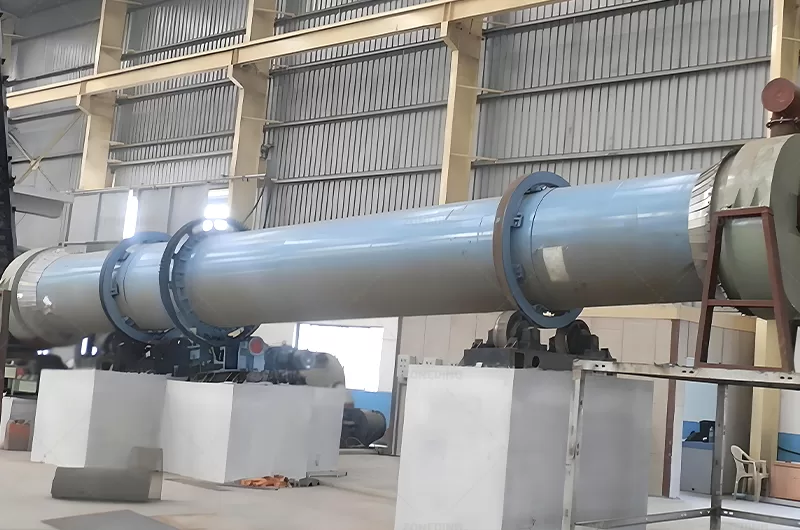
Key elements include:
Safety is not just about adding components; it’s about inherently safer design principles integrated throughout the system.
| Safety Feature | Purpose | Location(s) |
|---|---|---|
| Spark Detection | Detect incandescent particles traveling in ducts. | Ducts before baghouse, potentially after dryer. |
| Spark Extinguishing | Rapidly quench detected sparks with water spray. | Immediately downstream of detectors. |
| Explosion Venting | Safely release explosion pressure to prevent vessel rupture. | Dryer body, dust collector, silos. |
| Explosion Suppression | Chemically extinguish deflagration flame front. | Alternative/supplement to venting. |
| Temperature Monitoring | Detect overheating conditions, trigger alarms/shutdowns. | Hot gas inlet, dryer body, exhaust, bearings. |
| Emergency Shutdowns | Automatically stop system in unsafe conditions (high temp, etc.). | Integrated into control system. |
| Grounding/Bonding | Prevent static electricity buildup and discharge (ignition source). | All conductive equipment components. |
| Good Housekeeping | Design for easy cleaning, operational procedures for regular cleaning. | Entire system, especially ledges/corners. |
The dryer drum itself is central, but it can’t work alone. A complete, functional system requires several other essential pieces of equipment working together smoothly.
A full system requires a reliable feed mechanism, a heat source (furnace/burner), the dryer unit, robust conveying systems for wet feed and dry product, and critically, an efficient and safe dust collection system.
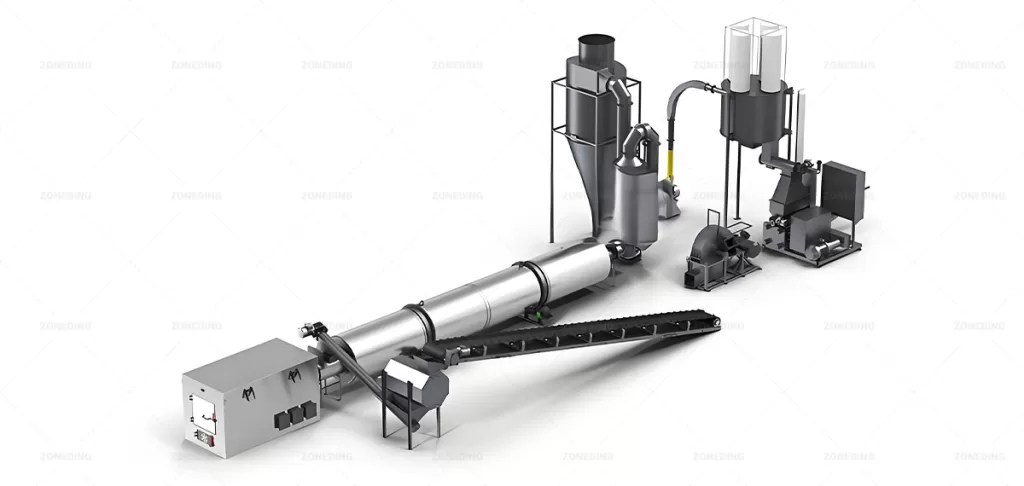
An effective bagasse drying operation is a system, not just a single machine. Besides the dryer body (typically a rotary drum), several key ancillary components are essential:
| Component | Function | Key Considerations for Bagasse |
|---|---|---|
| Feeding System | Reliably introduce wet bagasse into the dryer. | Must handle fibrous nature, prevent clogging. |
| Heat Source | Generate hot gas for drying. | Fuel type, efficiency, potential contamination (if direct fire). |
| Dryer Body | Facilitate heat/mass transfer between hot gas and bagasse. | Appropriate size, internal design for fiber handling. |
| Dust Collection | Capture fine bagasse dust from exhaust gas. | High efficiency needed, critical safety component. |
| Exhaust Fan | Provide airflow through the system, maintain negative pressure. | Sized for required airflow and system pressure drop. |
| Conveying (In/Out) | Transport wet feed to dryer, dry product away from dryer. | Must handle wet/sticky feed and dry/dusty/fibrous product. |
| Control System | Monitor sensors, automate adjustments for moisture/safety. | Essential for consistency, efficiency, and safety. |
The lowest initial price always looks tempting. But for complex equipment like a bagasse dryer, choosing the cheapest option often leads to much higher costs down the road due to failures, inefficiency, or safety incidents.
Focusing solely on price ignores critical factors like inadequate safety features, poor handling of fibrous material leading to clogs, high energy consumption, low durability, lack of necessary controls, and poor supplier support.
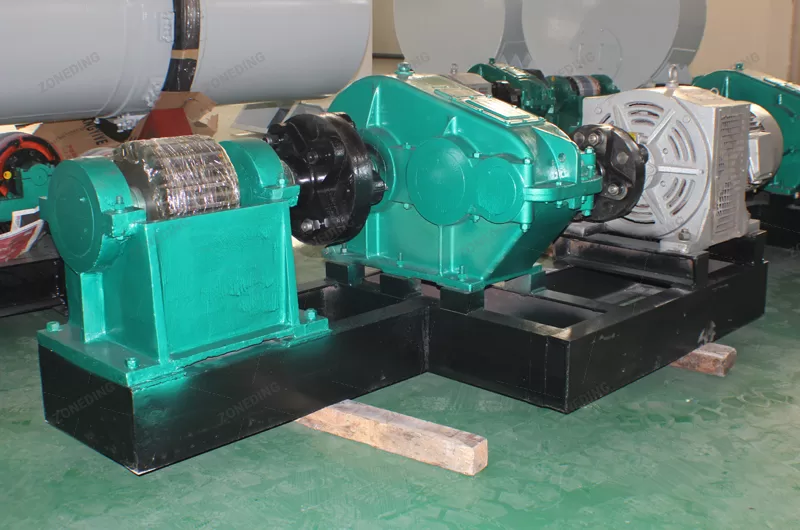
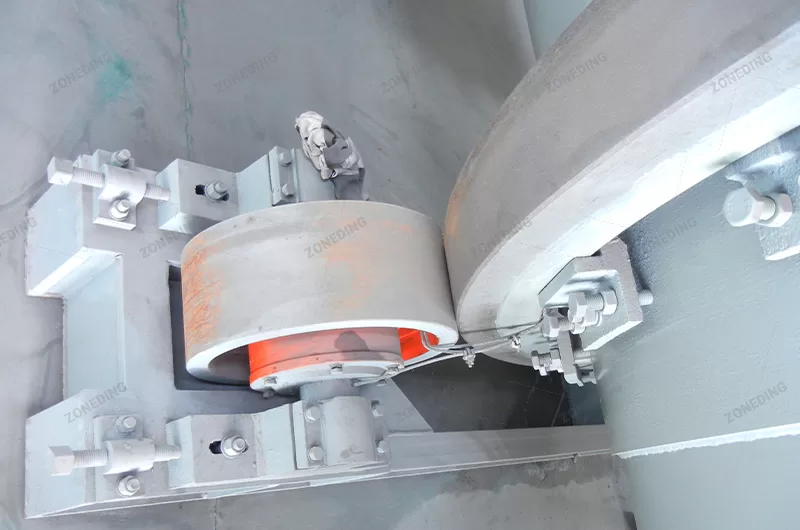
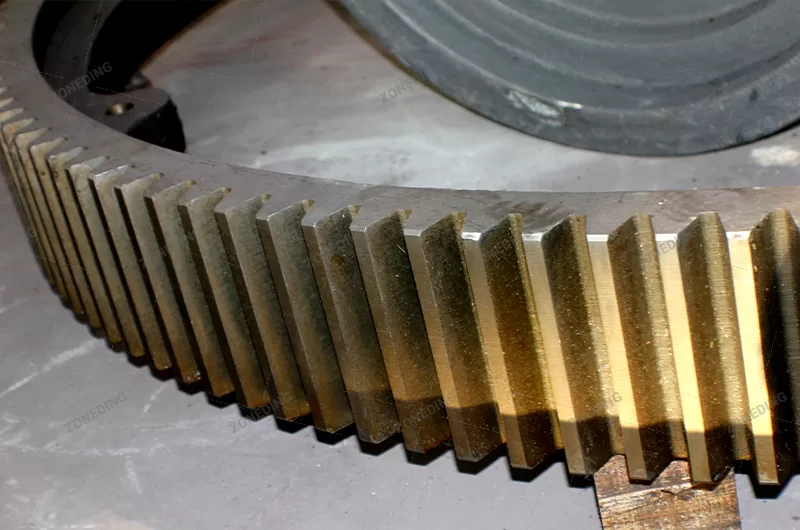
While budget is always a factor, selecting a bagasse dryer based primarily on the initial purchase price is a recipe for long-term problems and higher overall costs. Common pitfalls include:
Investing in a well-engineered dryer designed specifically for bagasse by an experienced supplier, considering total cost of ownership (including safety, efficiency, and reliability), is crucial.
| Pitfall | Consequence |
|---|---|
| Inadequate Safety Features | High risk of fire/explosion, catastrophic failure, injury. |
| Poor Fiber Handling Design | Frequent clogging, downtime, inconsistent drying, lost production. |
| Low Energy Efficiency | High ongoing fuel costs, poor ROI. |
| Lack of Robust Controls | Inconsistent product quality, energy waste, manual intervention needed. |
| Inferior Materials/Construction | Premature wear, corrosion, frequent repairs, shorter equipment life. |
| Undersized Dust Collection | Environmental non-compliance, unsafe workplace, product loss. |
| Minimal Supplier Support | Difficult installation/commissioning, prolonged downtime if issues arise. |
ZONEDINGMACHINE, as a reliable long-term partner, with comprehensive product line, customization capabilities, factory-direct model, and global experience and full-service support, can ensure you receive not just equipment, but a complete drying solution.
